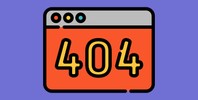Regardless if you work in-house for a brand or one of the many PPC agencies out there, your job as a PPC advertiser is to spend your advertising budget as wisely as possible to achieve your performance goals.
But as anyone managing tens, hundreds, or thousands of ad campaigns in Google Ads knows, this is easier said than done.
Along with the day-to-day optimization of campaigns, PPC advertisers need to monitor accounts for unforeseen threats that may unexpectedly deplete their budget. This could include anything from monitoring PPC landing pages for 404 errors to identifying fraudulent clicks on your ads from bots and other malicious actors.
With lots to monitor, automating as many of these processes is key to ensuring campaigns are running as efficiently as possible.
In this article, we’ll highlight four common threats that can quickly deplete Google Ad spend along with automated solutions to help prevent these threats from turning into full blown budget busters.
1. Performance Irregularities
If you’ve ever logged in to Google Ads the morning after optimizing an account to discover a campaign spent your entire budget in one day. Or your CTR has dropped to near 0%, then you should be aware of how important it is to your budget to catch performance anomalies fast.
It’s essential to have a system that automatically alerts you when your key performance indicators (KPIs) swing outside of an acceptable range so you can implement optimizations to course correct.
Depending on the complexity/frequency of your needs and your budget, there are a number of solutions available that can be used separately or in tandem.
The simplest (and most affordable) way to identify Google Ads performance anomalies is to set up Automated Rules that email you if your campaigns, ad groups, and keywords meet specific conditions.
When these elements either fail or meet your rules, Google Ads can email you an alert, pause or enable statutes, adjust bids and budgets, and more. Rules can be easily implemented across accounts, layered on top of each other, and automatically scheduled.
However, you can only run automated rules daily, so if you need more frequent anomaly detection, we’d suggest Google Ads scripts or third-party PPC software.
If you have connected Google Ads and Google Data Studio, it’s also possible to create an audit report to identify performance anomalies. Similar to Automated Rules, you’ll want to identify what conditions your ad campaign elements must achieve or fail.
From there, you can create graphs, charts, and tables that center around this data and use filtering and conditional formatting to highlight what parts of your campaigns you need to optimize.
Google Data Studio reports are easily replicable across multiple Google Ads accounts, update automatically, and free to run. Likewise, reports can be automatically emailed to you daily, making it easier for auditing anomaly reports to become a part of your daily routine.
If you need more advanced anomaly detection than Automated Rules or Data Studio Audit reports, Google Ads Scripts and/or third-party PPC monitoring tools may be your best bet.
A Google Ads script is JavaScript code that you run in your ad accounts to identify or control your Google Ads campaigns. There are plenty of great online resources for launching anomaly detection scripts, such as these from Google.
Finally, many Google Ads software solutions offer anomaly detection as part of their reporting software suites, some more advanced than others. If you’re considering the software route, make sure you find that software that offers the best functionality and price for your budget.
2. Click Fraud
The amount of PPC ad dollars lost to click fraud is astronomical. It’s also very difficult to pinpoint. According to recent statistics, it’s estimated that advertisers lose between $6.5 billion and $19 billion to ad fraud every year.
To put it bluntly, all of your online advertising could be targeted scammers, competitors, and bots incentivized to rack up clicks on your ads. With so much at stake, why wouldn’t you want to automatically protect your ad dollars?
While there are DIY routes to detect ad fraud such as identifying and blocking suspicious IP addresses visiting your site (ex: excessive visits, visits in impossible rapid succession), this is a fairly manual process. Likewise, Google Ads does regularly scan, identify, and remove invalid clicks and impressions on behalf of advertisers.
While Google does credit advertisers back for these fraudulent clicks, the frequency with which they do so indicates that even Google Ads’ click fraud algorithms are not perfect. The best way to ensure your Google ad dollars are automaticallyprotected against invalid traffic is to use click fraud detection platforms such as Lunio.
Click fraud software doesn’t just identify fraudulent traffic/users. It can also protect your business or clients against it. Using artificial intelligence, click fraud protection platforms suss out fraudulent actors that click on your ads and blacklist them from seeing your ads in the future.
And, because they’ve spent years filtering PPC advertisers’ traffic for invalid clicks, many solutions including Lunio already have extensive blacklisted IPs they apply to your account immediately.
3. Budget Overspending
Digital advertisers running PPC campaigns with strict budgets know that overspending a budget target can not only skew performance but fuel mistrust between you and your stakeholders. And with ad platforms such as Google Ads making it harder (not easier) to keep ad spend on track, overspends occur with regular frequency.
When you accidentally overspend a Google Ads budget, the best case scenario is that the additional spend goes toward well performing campaigns and shows conversion growth and positive return on ad spend (ROAS).
More often than not though budget overspends happen because of human error and aren’t easily justifiable to stakeholders. A PPC advertiser inputs a few too many zeros in a daily budget field. A campaign is accidentally set to Search and Display targeting. Or, simply, the PPC advertiser incorrectly calculated spend and pacing in their budget tracking spreadsheet.
Automating your Google Ads budget tracking is a simple way to ensure you are always in control of your PPC spend. It also helps reduce the time-consuming, manual, and error-prone nature of cross-platform and cross-account monitoring.
Similar to anomaly detection, it’s possible to partially automate Google Ads budget monitoring with scripts and/or spreadsheet reports. These tools are highly useful if you’re only running Google ads campaigns and need to check spend every day or so.
Also, it’s important you are comfortable manually updating these tools as you add new campaigns, change budget targets, alter budget cycle durations, etc.
If you’re using PPC software already, it likely has some budget monitoring functionality built in. Many PPC solutions allow you to monitor campaign spends and will email you when you’re nearing your budget target and need to take action.
Optimally, using automated PPC budget management software such as Shape.io will allow you to do more than just monitor campaign spends daily. PPC budget management software checks campaign spend frequently throughout the day.
It can programmatically protect against overspend by ensuring your campaigns are automatically deactivated when they reach their budget target. Or you can utilize automated budget pacing to intelligently adjust campaign daily budgets to hit your performance goals and budget cap.
4. Broken Landing Pages
When managing PPC campaigns, few things are as heart stopping as realizing your ads have been sending traffic to a broken or incorrect landing page. Google Ads will typically warn you when your ads direct to pages that aren’t working or were permanently removed.
But they’ll let you send traffic to pages that 404 or redirect to another page and still charge you for it. Telling your boss or your client that your ads have been directing qualified users to a nonexistent or non-functioning page is stomach-turning, especially when these errors can be prevented.
While they require a bit of a learning curve to get used to upfront, we’ve found the best way to programmatically identify broken landing pages are Google Ads scripts. While Google Ads offers their own link checking script, we recommend trialing/utilizing third-party scripts from Optmyzer. These scripts check for both 404 (not found) and 301/302 errors (redirects), and can alert you via email to fix these errors as soon as possible!
Better Budget Utilization Through Automation
When you automate highly manual, but important tasks such as anomaly detection, budget tracking, click fraud, and landing page monitoring, you’re not just preventing wasted PPC ad spend.
You’re also saving your company and/or clients valuable resources since your time and energy can be redirected into higher value optimizations and strategy development. With a plethora of automation options for every advertiser and budget, start by identifying the biggest Google ads budget waster for you and get automating!





